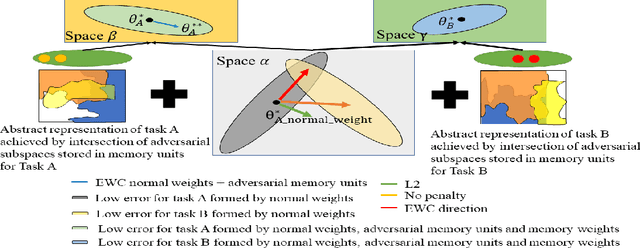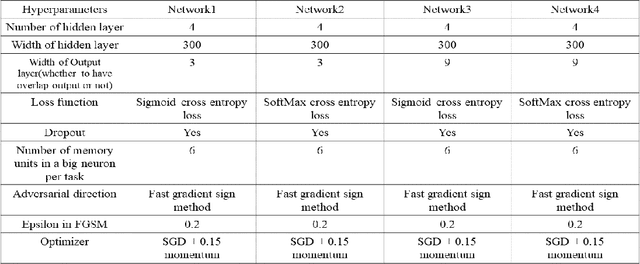Overcoming catastrophic forgetting problem by weight consolidation and long-term memory
Paper and Code
May 18, 2018



Sequential learning of multiple tasks in artificial neural networks using gradient descent leads to catastrophic forgetting, whereby previously learned knowledge is erased during learning of new, disjoint knowledge. Here, we propose a new approach to sequential learning which leverages the recent discovery of adversarial examples. We use adversarial subspaces from previous tasks to enable learning of new tasks with less interference. We apply our method to sequentially learning to classify digits 0, 1, 2 (task 1), 4, 5, 6, (task 2), and 7, 8, 9 (task 3) in MNIST (disjoint MNIST task). We compare and combine our Adversarial Direction (AD) method with the recently proposed Elastic Weight Consolidation (EWC) method for sequential learning. We train each task for 20 epochs, which yields good initial performance (99.24% correct task 1 performance). After training task 2, and then task 3, both plain gradient descent (PGD) and EWC largely forget task 1 (task 1 accuracy 32.95% for PGD and 41.02% for EWC), while our combined approach (AD+EWC) still achieves 94.53% correct on task 1. We obtain similar results with a much more difficult disjoint CIFAR10 task, which to our knowledge had not been attempted before (70.10% initial task 1 performance, 67.73% after learning tasks 2 and 3 for AD+EWC, while PGD and EWC both fall to chance level). Our results suggest that AD+EWC can provide better sequential learning performance than either PGD or EWC.
 Add to Chrome
Add to Chrome Add to Firefox
Add to Firefox Add to Edge
Add to Edge